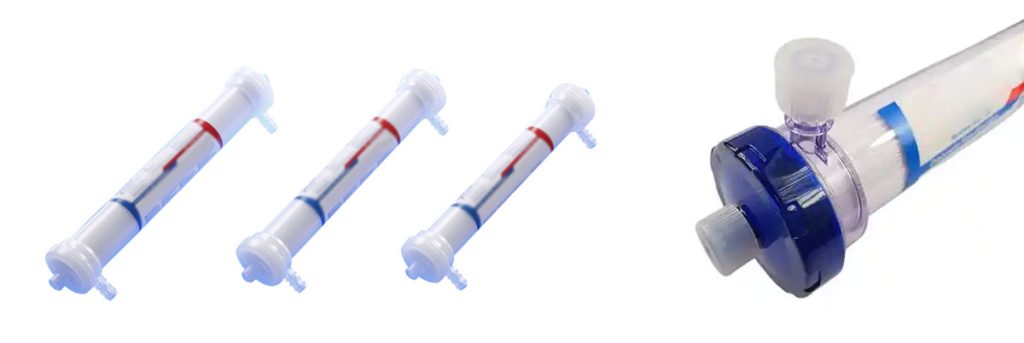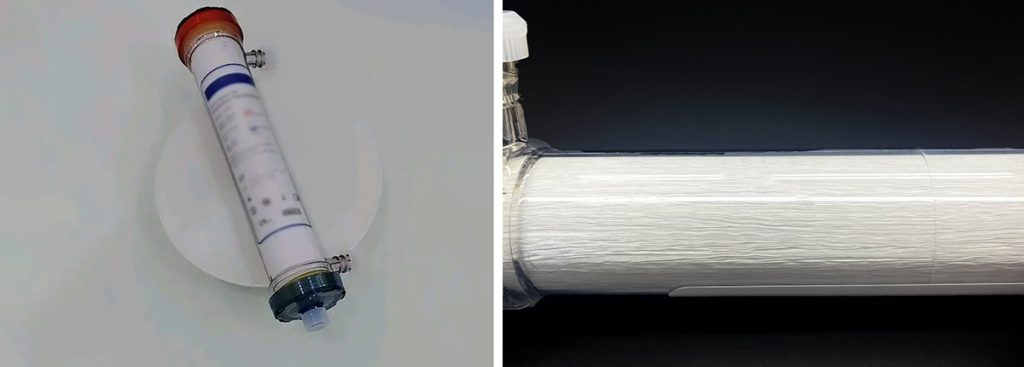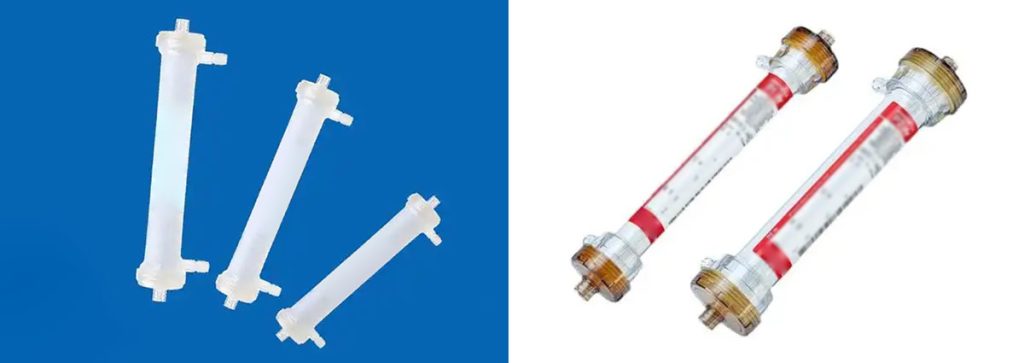

The growing prevalence of chronic kidney disease (CKD) highlights the critical role of dialysis equipment in global healthcare. This condition affects nearly 850 million people worldwide, with one in ten adults estimated to have CKD. Among individuals aged 75 and older, nearly half face CKD, with 36% experiencing severe stages. The aging population fuels this trend, as projections suggest that by 2050, over 16% of the global population will be aged 65 or older, significantly increasing the burden of end-stage renal disease.
Technological advancements in hemodialysis are transforming treatment outcomes. In 2018, over 785,000 U.S. residents required kidney failure management, with 554,038 relying on dialysis. Innovations such as portable and home-based solutions enhance patient convenience and accessibility, addressing the growing demand for effective therapies for end-stage renal disease.
Key Takeaways
- Chronic kidney disease affects about 850 million people worldwide. This shows the need for better dialysis options.
- New technology, like portable and home dialysis machines, makes treatment easier and more helpful for patients.
- The global dialysis market is expected to grow a lot. It may reach $25.2 billion by 2031 because more people want advanced machines.
- Dialysis is becoming more popular since it is cheaper and more flexible. It also helps dialysis patients live better lives.
- Solving high costs and limited access to dialysis is important. This can make healthcare better for everyone around the world.
Dialysis Market Trends Shaping the Industry
Lifestyle Changes and Their Impact on Kidney Health
Lifestyle changes have significantly influenced kidney health worldwide. Poor dietary habits, sedentary lifestyles, and rising obesity rates have contributed to the increasing prevalence of chronic kidney disease. A study involving 55,237 participants revealed 2,279 documented cases of chronic kidney disease over an average follow-up period of 13.86 years. The mean age of individuals with chronic kidney disease was 62.0 years, compared to 56.1 years for those without the condition, highlighting the impact of aging and lifestyle factors.
The global dialysis machine market has experienced growth due to the rising cases of hypertension and diabetes, which are major risk factors for kidney diseases. These conditions often lead to acute kidney injury and, in severe cases, end-stage renal disease. The increasing prevalence of end-stage renal disorders has driven demand for dialysis equipment, as patients require effective treatment options to manage their conditions.
Governments and healthcare organizations are focusing on raising awareness about kidney health. Initiatives promoting early diagnosis and preventive measures aim to reduce the burden of chronic kidney diseases. However, the dialysis machine market continues to expand as the need for advanced treatment solutions grows.
Technological Advancements in Dialysis Equipment
Technological advancements in dialysis equipment have revolutionized patient care. Innovations such as portable dialysis machines and enhanced monitoring technologies have improved treatment outcomes and patient experiences. Portable dialysis machines offer greater convenience and flexibility, reducing infection risks and enhancing the quality of life for patients. Home dialysis systems allow for more frequent treatments, leading to better blood pressure control and fewer dietary restrictions.
The global dialysis market has benefited from increased research and development expenditures. Companies are investing in new dialysis technologies to meet the growing demand for effective and user-friendly solutions. For example, enhanced monitoring technologies have improved patient safety by reducing complications through advanced diagnostic techniques. These innovations have contributed to the market growth and expanded the dialysis market size.
| Innovation Type | Impact on Patient Outcomes |
|---|---|
| Portable Dialysis Machines | Greater convenience and flexibility for patients, reducing infection risk and improving quality of life. |
| Home Dialysis | Allows for more frequent treatments, leading to better blood pressure control and reduced dietary restrictions. |
| Enhanced Monitoring Technologies | Improved patient safety and fewer complications through advanced diagnostic techniques. |
The global dialysis machine market is projected to grow significantly, with a market forecast estimating its value to reach $25.2 billion by 2031, up from $16.0 billion in 2022. This growth reflects the increasing demand for advanced dialysis technologies and the emphasis on improving patient outcomes.
Increasing Adoption of Home Dialysis Solutions
The adoption of home dialysis solutions has gained momentum in recent years. Dialysis patients increasingly prefer home-based treatments due to their convenience, cost-effectiveness, and ability to improve quality of life. Home dialysis systems provide greater flexibility, allowing patients to manage their treatments without frequent visits to dialysis center. This trend has contributed to the expansion of the global dialysis market.
The demand for home dialysis solutions is expected to rise due to the increasing prevalence of chronic kidney diseases and end-stage renal disease. According to the CDC, approximately 786,000 people in the U.S. were affected by end-stage kidney disease as of 2020, with a significant portion requiring dialysis. Notably, the percentage of patients performing dialysis at home more than doubled from 2008 to 2018.
| Metric | Value |
|---|---|
| Expected Market Growth | $32.7 billion |
| Compound Annual Growth Rate (CAGR) | 10.5% |
| North America Market Share (2024) | 39.6% |
The global dialysis machine market has also benefited from technological advancements in dialysis machines, which have improved the safety and efficiency of home dialysis systems. These innovations have made home dialysis solutions more accessible and appealing to dialysis patients, further driving market growth. The increasing prevalence of end-stage renal disorders and the emphasis on patient-centered care have solidified the role of home dialysis in the global dialysis market.
Dialysis Equipment Market Segmentation
By Type: Hemodialysis and Peritoneal Dialysis
The dialysis equipment market is segmented into two primary types: hemodialysis and peritoneal dialysis. Hemodialysis dominates the market due to its widespread adoption, cost-effectiveness, and technological advancements. It remains the preferred choice for patients requiring frequent treatments. Peritoneal dialysis, while less prevalent, offers an alternative for dialysis patients seeking home-based care. However, its higher costs and limited awareness have restricted its adoption.
| Type of Dialysis Equipment | Market Share | Key Factors Driving Demand |
|---|---|---|
| Hemodialysis | Higher | Efficacy, affordability, and continuous technological improvements |
| Peritoneal Dialysis | Lower | Convenience for home use but higher costs and limited uptake |
The global market for both types continues to grow as healthcare providers invest in innovative solutions to improve patient outcomes.
By Product: Equipment, Consumables, and Drugs

Dialysis equipment encompasses a range of products, including machines, dialyzers, and catheters. These products form the backbone of treatment for chronic kidney disease. Consumables, such as dialysate solutions and tubing, are essential for each session, ensuring safety and efficiency. Drugs, including erythropoiesis-stimulating agents, complement the treatment by managing complications like anemia.
| Product Type | Description |
|---|---|
| Equipment | Includes dialysis machines, dialyzers, and catheters |
| Consumables | Covers dialysate solutions, tubing, and other disposable items |
| Drugs | Medications to manage complications like anemia |
The demand for these products has surged due to the increasing prevalence of kidney diseases and the need for advanced treatment options.
By End-User: In-Center Dialysis and Home Care
The market is also segmented by end-user, with in-center dialysis and home care being the two primary categories. In-center dialysis remains the most common option, offering professional supervision and access to advanced facilities. However, home care solutions, such as home hemodialysis (HHD), are gaining traction. Patients benefit from greater autonomy, flexible schedules, and improved quality of life.
- Home hemodialysis uptake varies globally, with higher rates in countries like New Zealand (18%) and Australia (9%).
- Efforts to increase adoption include technological innovations and expanded training programs for patients.
The shift toward home care reflects a growing emphasis on patient-centered care and cost-effective treatment models.
Regional Dynamics in the Global Kidney Dialysis Equipment Market
North America: Market Leadership and Innovation
North America leads the global kidney dialysis equipment market due to its advanced healthcare infrastructure and significant investments in clinical technology. The United States plays a pivotal role, driven by a high prevalence of chronic kidney disease (CKD). Over 37 million Americans are estimated to have CKD, creating substantial demand for dialysis equipment. Canada also contributes to the region’s dominance, with its robust healthcare system and focus on innovation.
Key factors driving growth in North America include:
- Technological advancements: Automated systems and home dialysis machines improve accessibility and treatment outcomes.
- Aging population: The rising number of elderly individuals increases the demand for dialysis treatments.
- Healthcare expenditure: Higher spending supports the development and adoption of advanced dialysis solutions.
The region also sees a growing trend toward home dialysis, with patients favoring convenience and flexibility. Companies are investing in AI and machine learning to enhance machine performance and patient outcomes, further solidifying North America’s leadership.
Asia-Pacific: Dominance in Market Share and Growth Opportunities
The Asia-Pacific region dominates the global kidney dialysis equipment market in terms of growth potential and revenue contribution. Countries like China, India, and Japan experience a high prevalence of diabetes and hypertension, major risk factors for kidney disease. In 2020, the region recorded the highest revenue contribution, with a compound annual growth rate (CAGR) of 9.9% projected through 2030.
| Year | Revenue Contribution | CAGR (%) | Key Factors |
|---|---|---|---|
| 2020 | Maximum | 9.9 | High prevalence of diabetes, low organ transplantation rates, and increased healthcare spending. |
| 2030 | $36,493.4 million | 9.9 | Surge in kidney failure cases and adoption of advanced dialysis products. |
The region’s growth is fueled by rising healthcare expenditures and the adoption of innovative dialysis technologies. Despite challenges like limited organ transplantation rates, the Asia-Pacific market continues to expand, offering significant opportunities for manufacturers.
Europe: Regulatory Landscape and Steady Demand
Europe represents a mature segment of the global kidney dialysis equipment market. Countries like Germany, France, and the United Kingdom drive demand through their well-established healthcare systems. The region benefits from strong regulatory frameworks that ensure the safety and efficacy of dialysis equipment.
The European market is characterized by steady growth, supported by:
- Aging population: A significant portion of the population requires dialysis due to age-related kidney issues.
- Government initiatives: Programs promoting early diagnosis and treatment of kidney diseases contribute to market stability.
While Europe faces challenges like stringent regulations and high costs, its focus on quality and patient safety ensures consistent demand for dialysis equipment.
Latin America: Challenges and Emerging Potential
Latin America presents a unique mix of challenges and opportunities in the global kidney dialysis equipment market. The region faces a high prevalence of chronic kidney disease (CKD), driven by rising rates of diabetes and hypertension. However, limited healthcare infrastructure and economic disparities hinder access to advanced dialysis solutions for many dialysis patients.
Brazil, the largest market in the region, demonstrates both the challenges and potential for growth. The country allocates 9.47% of its GDP, equivalent to USD 161 billion, to healthcare. Private hospitals account for 62% of the nation’s 7,191 facilities, improving access to quality dialysis services. Investments in modern infrastructure and technologies have reduced waiting times and enhanced treatment outcomes. Public-private collaborations also play a crucial role in meeting the growing demand for reliable therapies.
| Factor | Insight |
|---|---|
| Healthcare Spending | Brazil spends 9.47% of its GDP (USD161 Billion) on healthcare. |
| Private Sector Involvement | 62% of Brazil’s 7,191 hospitals are private, enhancing access to quality dialysis services. |
| Infrastructure Improvements | Investments in modern facilities and technologies are reducing waiting times and improving outcomes. |
| Public-Private Collaborations | These collaborations are addressing the rising demand for reliable and effective therapies. |
Despite these advancements, challenges persist. Many rural areas lack access to dialysis centers, forcing patients to travel long distances for treatment. Economic instability in some countries further limits the adoption of advanced dialysis equipment. Addressing these issues requires continued investment in healthcare infrastructure and policies that promote equitable access.
Middle East & Africa: Limited Access and Growth Prospects
The Middle East and Africa exhibit significant disparities in the global kidney dialysis equipment market. While countries like Saudi Arabia and the UAE show promising growth, others, such as South Africa, experience slower progress. The region’s dialysis market faces major barriers, including inadequate reimbursement systems and financial constraints for dialysis patients.
In many developing nations, only 20% of patients requiring dialysis receive the necessary treatment. This low access rate stems from limited healthcare funding and a lack of comprehensive insurance coverage. However, countries with higher economic stability, such as Saudi Arabia, are investing in advanced dialysis technologies. These efforts aim to improve patient outcomes and expand access to life-saving treatments.
The region’s growth prospects depend on addressing these challenges. Governments and private organizations must collaborate to develop affordable solutions and expand healthcare infrastructure. By doing so, the Middle East and Africa can unlock their potential in the global kidney dialysis equipment market.
Challenges and Restraints in the Dialysis Equipment Market
High Costs and Affordability Issues

The high costs associated with dialysis treatments and equipment remain a major barrier in the global kidney dialysis equipment market. Patients often face significant financial burdens due to the recurring expenses of consumables, drugs, and dialysis sessions. Economic studies reveal that annual costs per patient vary widely, with hemodialysis ranging from Int$3,424 to Int$42,785 and peritoneal dialysis from Int$7,974 to Int$47,971. These costs are driven by essential components like dialysis solutions, tubing, and medications.
| Type of Dialysis | Annual Cost per Patient (Int$) | Cost Drivers |
|---|---|---|
| Hemodialysis (HD) | 3,424 to 42,785 | Drugs, consumables |
| Peritoneal Dialysis (PD) | 7,974 to 47,971 | Dialysis solutions, tubing |
| Ratio of Direct Dialysis Cost to GNP p.c. | 12.5 (least developed), 6.2 (lower middle), 2.9 (upper middle) | – |
In developing countries, the ratio of dialysis costs to gross national product per capita highlights affordability challenges. For many families, these expenses lead to catastrophic healthcare expenditures, limiting access to life-saving treatments.
Limited Access to Advanced Dialysis Solutions
Access to advanced dialysis solutions remains uneven across regions. Specialized nephrology services are concentrated in urban areas, leaving rural populations underserved. Many patients in these areas travel long distances to reach dialysis center, which exacerbates the burden of treatment. Additionally, insufficient public health campaigns and routine screenings result in late-stage diagnoses of kidney disease.
Other barriers include the high costs of dialysis and transplantation, which make these treatments unaffordable for many families. In some developing nations, only 20% of patients requiring dialysis receive the necessary care. This disparity underscores the need for expanded healthcare infrastructure and affordable solutions to bridge the gap in access.
Regulatory and Reimbursement Barriers
Regulatory and reimbursement challenges further restrain the global kidney dialysis equipment market. Stringent regulations often delay the approval of innovative dialysis technologies, limiting their availability to patients. Reimbursement systems also vary widely across countries, with many failing to cover the full costs of dialysis treatments.
The shortage of trained healthcare professionals compounds these issues. Nephrologists, dialysis nurses, and technicians are in short supply, particularly in rural areas. This lack of expertise affects the quality of care and limits the adoption of advanced dialysis solutions. Addressing these barriers requires coordinated efforts from governments, healthcare providers, and manufacturers to ensure equitable access to dialysis treatments worldwide.
Conclusion
The global market of dialysis equipment continues to evolve, driven by rising cases of chronic kidney disease, diabetes, and hypertension. Technological advancements and government initiatives are improving access to life-saving treatments. The aging population further amplifies the demand for innovative dialysis solutions.
| Statistic | Value | Year |
|---|---|---|
| Global kidney disease cases | 850 million | 2020 |
| Prevalence of chronic kidney disease (65+) | 38% | 2021 |
| People waiting for kidney transplants (US) | 92,000 | 2022 |
| Projected diabetes cases (US) | 34,755.3k | 2030 |
Efforts to address affordability, accessibility, and regulatory barriers remain crucial. Expanding healthcare infrastructure and fostering innovation will ensure equitable access to dialysis solutions worldwide. The market holds immense potential to transform patient care and improve outcomes globally.
